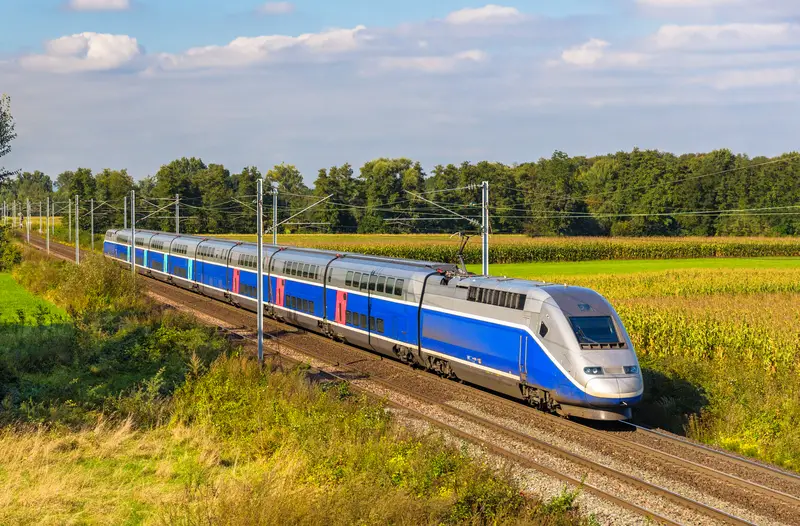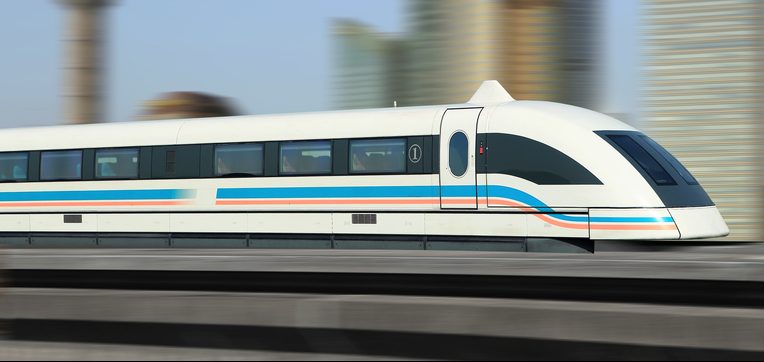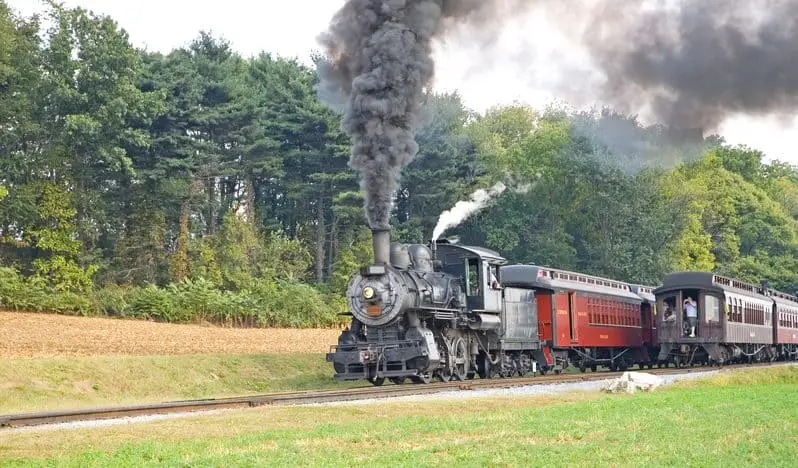
As it is with automobiles, the past 200 years have seen trains undergoing several technological changes to their design, including the fuels that drive them. But what do trains use as a fuel source, and how has modern innovation affected rail transport?
The majority of modern locomotives are powered by petroleum diesel or electrical current. Due to environmental concerns, however, there is a drive to change to biodiesel or a blend of cleaner biofuel and renewable diesel combined with electrical energy, known as diesel-electric.
Throughout history, three main fuel types have been used to drive trains. From steam-powered locomotives using coal and wood to diesel, first introduced in the 1930s, and the electric trains we see today, trains have come a long way from those pioneering early days.
The 3 Types Of Train Fuel
An interesting characteristic of locomotive history is that steam, diesel, and electric power all followed their trajectory in development, sometimes overlapping, and are all still in use today.
There are even some hybrid engines that combine any two of the technologies.
- Steam
- Diesel
- Electric
1. Steam
Combustible material such as coal or wood is burned in a boiler to produce gaseous steam. This highly pressurized steam is channeled to a set of cylinders in the front of the locomotive. Pistons, physically connected to the wheels, turn, propelling the train forward.
Steam locomotives need to carry the fuel sources along. Usually, a dedicated car is attached to the locomotive, which carries water and the coal, oil, or wood that fuels the fire in the boiler.
2. Diesel
Like auto cars that run on diesel, a large internal combustion engine produces electricity that powers electric motors connected to the locomotive’s wheels.
However, a separate carriage for the diesel is not required. Instead, the fuel is stored in tanks fitted to the bottom of the locomotive’s floor.
Diesel is a much simpler technology than steam. In addition, because control is achieved electrically, more than one locomotive can be coupled in series to pull heavier loads when longer trains are required.
3. Electric
A pantograph, connected to the train’s roof, picks up electrical power through a wire suspended above and parallel to the train track. Simple to operate and maintain, one disadvantage is that it can only be used where the overhead wires are installed.
Overhead electrical power is popular in more urban public transport applications such as trams and trolleybuses.
These are more lightweight vehicles that carry passengers and therefore consume less energy than trains, and maintenance or repair is easier and cheaper. However, electric trains cost up to $7,500,000 to buy, which is more than double the cost of a diesel-powered train.
Electric Vs. Diesel-Electric: The Main Difference
It might not sound evident when comparing electric to diesel-electric power. However, the critical distinction is that electric trains do not have internal combustion engines. Instead, all the energy is supplied by overhead lines, an onboard supercapacitor, or batteries.
A diesel-electric engine, although delivering electrical power to the motors that drive the wheels, generates and transmits power to the electrical motor that does all the heavy work.
Pure electric motors are much quieter than diesel-electric motors as there is no mechanical noise. As a result, there is also no engine and exhaust noise or emissions, and the train and track maintenance is reduced.
Modern Trains: Efficiencies Of Scale

The popularity of rail transport and its continued use can be attributed to economics. According to the CSX Corporation, long-haul train freight transport is four times cheaper than trucks and road networks. Efficient fuel consumption also means fewer emissions, helping to preserve our planet.
This calculation naturally assumes that the comparison is made between trains running on petroleum diesel, the fuel type used to power trucks, and other forms of inter-state vehicular transport that run on our highways.
Before the advent of the diesel-electric locomotives we see today, pressurized steam was the power source of choice that pulled train wagons along a track.
Steam power was the most enduring method of propelling trains and can even be found today in Chinese mines and as tourist attractions in many countries, such as the Elgin Railway Market in South Africa.
Fuelling Trains – A Powerful History

The first commercially viable locomotive, powered by steam, dominated rail transport for the best part of the 19th century.
However, the evolution of both diesel and electric trains ran almost concurrently, culminating in the diesel-electric derivatives we see on our railway lines today.
Steam Power
Richard Trevithick, a British mining engineer and inventor is widely recognized as the pioneer of the modern train.
Although primitive wheeled wagons, pulled by people or horses, were used as early as the Babylonian period, circa 2200 BC, it was not until Trevithick introduced steam power in 1904 that the idea of steam-driven locomotives was introduced.
The first commercially viable steam locomotive, “Salamanca,” was introduced in Leeds, the United Kingdom, in 1812. This rack locomotive, developed by Matthew Murray, heralded the age of the steam train.
The Electric Train
The industrial revolution of the first half of the 19th century saw trains gain popularity as a cost-effective and reliable method for delivering goods and people. Another Brit, chemist Robert Davidson of Aberdeen, Scotland, built the first recognized battery-driven electric locomotive in 1837.
Batteries had limited power, and a more efficient electrical source was required to drive trains long distances. It was not until 1875 that Ukrainian engineer Fyodor Pirotsky successfully converted a double-decker horse carriage into an electric tram.
Pirotsky’s invention found little traction globally until the Siemens pioneers, Carl and Werner, met with and studied Pirotsky’s design. In a few short years, they had demonstrated an electrically driven carriage drawing power from a 180V DC overhead wire, running parallel to the track.
Incredibly, in under 20 years, electrically powered trains found their way to the United States. By the 1890s, the Baltimore and Ohio Railroad was connected to New York via a network of tunnels around downtown Baltimore.
The Valtellina line in Italy, stretching 65 miles, was introduced in 1902 and was the first long-distance electrical traction system using three-phase electrical power. Electrical power changed over the next 40 years, with the 50Hz industrial frequency becoming the standard.
The Age Of Diesel Power
The prime mover of the diesel-powered locomotive is the compression-ignition engine patented by Rudolf Diesel in 1898.
The inherent inefficiencies of internal combustion engines operating effectively only in low-power band applications meant that steady technological innovation in train design was required before the power-to-weight ratio was sufficiently reduced to make diesel power feasible.
A 95-ton locomotive operating at 883Kw was introduced by the Prussian State Railways in 1912 but could only reach a maximum speed of 60mph.
When Hermann Lemp, an engineer working for General Electric, introduced a DC electrical control system, the diesel-electric locomotive found commercial success.
Conclusion
Steam-powered trains are notably only seen as museum pieces and historical curiosities today. And although diesel-electric and electric trains are still very much in use today, the fuels that drive trains are an art that is constantly evolving.
Moreover, with cost and green-energy consumption ever increasing in importance, the future of train fuels is almost undoubtedly electrical.
